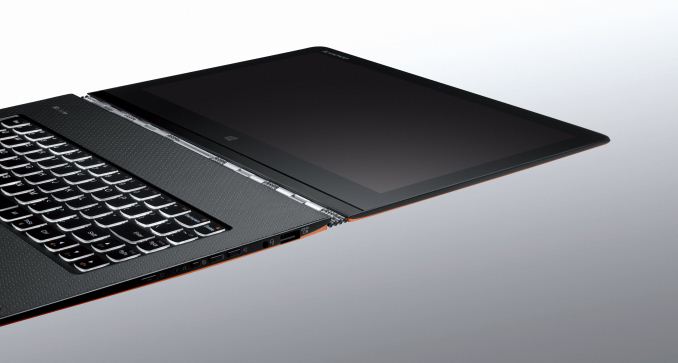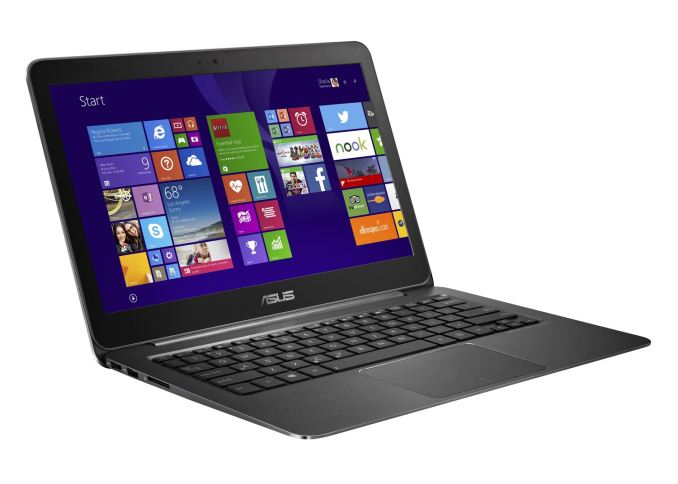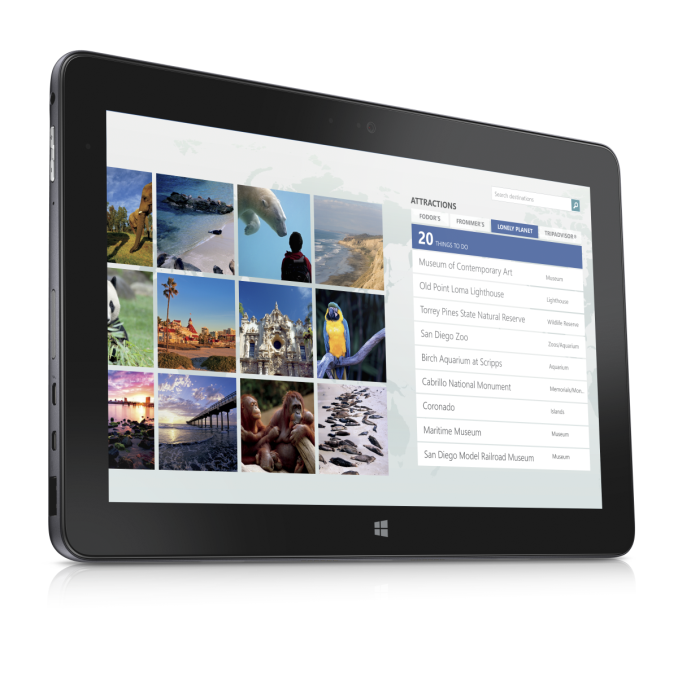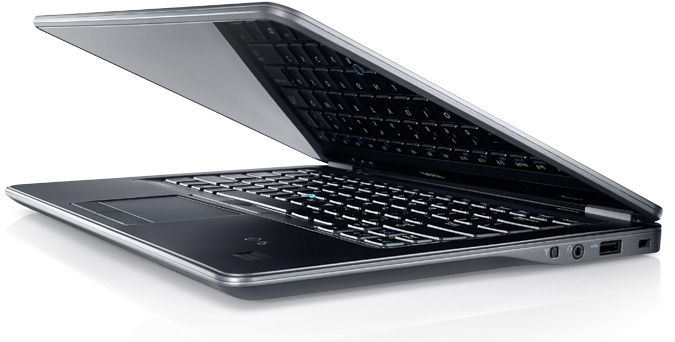Analyzing Intel Core M Performance: How 5Y10 can beat 5Y71 & the OEMs' Dilemma
by Brett Howse & Ian Cutress on April 8, 2015 8:00 AM ESTThe Devices and Test
For today's article we have run a sampling of devices through several benchmarks which vary in workload substantially. Some are single-threaded and some are multi-threaded - some emphasize burst performance, and some focus on sustained performance. Some involve the GPU and some do not. During all of the benchmarks, CPU frequencies, GPU frequencies, and processor temperature were logged. The devices are all different as well, and offer different takes on Core M.
The first device is the Lenovo Yoga 3 Pro. This is the same device that we reviewed, and it features a Core M-5Y71 processor which is the very top of the Core M range. Lenovo has chosen to include a fan, so this is the only one of the Core M devices being included that is actively cooled. Being a convertible laptop, Lenovo must be more wary of surface temperatures than a traditional laptop since the Yoga 3 Pro can be used in the hand as a tablet.
The second device is the ASUS Zenbook UX305, which was recently reviewed as well. This features a Core M-5Y10 processor, which is the lowest-end model available. The UX305 is passively cooled and features an entirely aluminum chassis, which helps to dissipate the heat generated. As a laptop, higher surface temperatures can be manageable since the device is normally sitting on the raised feet and not in direct contact with skin.
The third device is the Dell Venue 11 Pro 7000, which also features the top end Core M-5Y71. This is a tablet first and foremost, and is also passively cooled. The Venue features a plastic rear casing, and as a tablet surface temperatures must be taken into consideration.
The final device is the Dell Latitude 14 7000, which is powered by the Core i5-5200U processor. Being a much higher TDP part, but largely the same architecture, will give a reference point on what Broadwell will do when given better cooling. The sample received has only one channel of memory, which will mostly affect the GPU scores. Dell does offer dual-channel memory, so this device can perform higher than the sample that we have.
Overall the Core i5-5200U is much less dynamic than Core M, with a base CPU frequency of 2.2 GHz and boost of 2.7 GHz. If you will notice, the boost is actually less than the Core M-5Y71, so assuming adequate cooling, or short enough workloads, Core M could in theory outperform the i5, which is something we did see on some benchmarks in the Yoga 3 Pro review.
The average computing day for anyone is going to be wildly different depending on what tasks they are performing. A lot of tasks however are very much burst workloads. As an example, browsing the web means loading the page, which is mostly done upfront. These kinds of workloads will play well into what Core M can do. Boost up to the maximum frequency, get the work done, and then fall back down to the base frequency and cool off. This is the epitome of Intel's hurry up and get idle philosophy.
However not every workload is like this. Gaming for example is a lot of consistent work, done over a long period of time, so cooling is the key here to keep performance up.
To sample a wide variety of workloads, I have picked a variety of benchmarks which are both short and long, do burst work or sustained work, and some involve the GPU and others do not.
Cinebench R15 Single-Threaded: This benchmark performs rendering on a single CPU core, so it should showcase higher clock speeds and good single-threaded performance. The benchmark lasts roughly ten minutes.
Cinebench R15 Multi-Threaded: The same benchmark, but the work is performed on all available cores, including hyper-threading. This benchmark is roughly three minutes.
PCMark 8 Home and Creative: Both the Home and Creative suites of PCMark 8 feature a variety of workloads. Home includes workloads for web browsing, writing, gaming, photo editing, and video chat. Creative includes web browsing, photo editing, video editing, group video chat, media transcoding, and gaming workloads. Home is around thirty minutes, and Creative takes about an hour to complete.
TouchXPRT 2014: This benchmark performs beautify photos (add filters, HDR, etc), blend photos, convert videos for sharing, create music podcast, and create slideshow from photos. Each task is timed, and a lower time results in a higher score. This benchmark takes about ten minutes to finish.
3DMark Sky Diver and Cloud Gate: 3DMark is a staple of our reviews. Both run through several graphics and physics tests which work both the CPU and GPU. Sky Diver is the more difficult of the tests. Sky Diver is about five minutes, and Cloud Gate is about three minutes.
3DMark Ice Storm Unlimited: This test is completely off-screen, and allows for comparison of the graphics across devices and even platforms. Being that it is available for smartphones and tablets, it is a much lower demand on the GPU, and completes very quickly on a PC with the entire benchmark being complete in about a minute.
DOTA 2: This incredibly popular online multiplayer battle-arena game is our final benchmark. This is the same workload performed for the DOTA 2 benchmark we have for reviews, only we run it for the full length of the recording. The entire run is around 45 minutes.
The following pages are very graph heavy, with some of the graphs being quite wide to show the sustained performance of the device over the benchmark run. Below is a gallery of all of the images, in order, which can be references as larger images in a separate window.
A note about the graphs. Each benchmark will show an entire run on each device, and then some combined graphs with the individual scores compared against the other devices. Due to the sampling rate, it may appear that some devices finished the benchmark before the others, but this is not always the case. Several of the devices were too loaded to always log to the text file, so they may have less entries, and appear to get the work done quicker if just comparing based on the time scale. The important data on the combined graphs is how each device handles the entire workload versus the others. We have also included the scores from each device to see where they finish the benchmark.




















110 Comments
View All Comments
xilience - Wednesday, April 8, 2015 - link
Minor issue with one of the graphs. PCMark8 Home graph, the temperature scales are different for each device, whereas they look to be the same for all other tests. The numbers are correct, but when quickly comparing graphs it can be confusing to read. THANKS for this great article, it gives a lot of insight into mobile hardware design.digiguy - Wednesday, April 8, 2015 - link
Very interesting article. Core M makes sense (contrary to what some people say in the comments) for those that have the money and want a totally silent device.Having said that, some ultrabooks and core tablets (like my 35W TDP Asus ultrabook or my surface pro 3 i3) are extremely silent, with the fan kicking in only while gaming, which in my opinion is a small concession in exchange for sustained performance (zero throttling in either of the 2 devices).
Also the race to the thinnest device is probably questionable, especially for laptops. Making a smaller device with a bigger screen like Dell did is a great idea, making it thinner and thinner doesn't add much and subtracts performance or adds heat.
What a pity you didn't add the new Macbook to the comparison (probably not available yet). Hope you will do an updated version with it. It will also allow to see how 5y71 performs in a laptop, rather than in a convertible/tablet.
TEAMSWITCHER - Wednesday, April 8, 2015 - link
The problem with just making devices thicker and adding fans is that it compromises portability for only a little in extra performance.For nearly a decade, I carried around a 15" PowerBook or MacBook Pro. Good machines but only mid-range graphic performance. Recently, I slimmed down to an 11" MacBook Air, and I will never...ever...go back to lugging around a larger device.
I also have a desktop Windows Workstation for performance oriented work. It's much faster than any laptop you can buy. Using Drop Box and One Drive I keep files synced between the two machines, and can just hop-up from my Workstation, grab my Mac Book, and hit the door.
Thankfully, my computer budget is large enough to afford a Workstation and a Mac Book - it's actually a necessity for cross-platform developers. I get extreme performance from my workstation and extreme portability from my Mac Book. I don't have to live with compromises, I just have to switch devices.
Refuge - Wednesday, April 8, 2015 - link
I'm all for small form factors and portability, I notice the difference between my 15 inch laptop and my girlfriends 10 inch convertable. It is substantial, but I don't feel that going thinner is the way anymore.The increase in portability I feel personally is purely from the decrease in screen size which naturally lowers the dimensions and weight of the device considerably, but some of these are getting so thin that they are actually uncomfortable, I don't want to hold a blade, or a brick, give me a thing (but not a blade like thin) laptop with a 11 inch screen for on the go work, make it cool, quiet, and perform, and make it like an inch thick, then knock it from $1,000 to $500. I'll buy it everytime.
I feel the same way about phones, I don't want my next one to be thinner, or have a bigger screen.
5 inches fits my hand perfectly, I don't work or game on it. I use it to pass time reading Anandtech or communicating with the world.
I game at home on my SFF that I can easily take to a lan party, or I work on my portable but not paper thin laptop.
I'm happy in all regards honestly. But I suppose this just comes down to personal preference much like how nice peripherals are comes down to taste in the end barring any insufferable design choices.
wallysb01 - Thursday, April 9, 2015 - link
"5 inches fits my hand perfectly"That's what she said.
digiguy - Wednesday, April 8, 2015 - link
"The problem with just making devices thicker and adding fans is that it compromises portability for only a little in extra performance."I think it's actually the contrary, if we talk about laptops/ultrabooks. There can be a big increase in performance for very little increase in thinkness and noise. My ultrabook has a 35w mobile second generation i7 that still performs better than any 4th gen i7 ULV CPUs, let alone Core M... And still it's thin, light and with 8 hours battery life. It is so silent that the fan won't kick in even when I do an OCR of a 10 page file...
For tablets it's different, but still, my SP3 (i3) is thin and has a fan, that never kicks in... Only while gaming, and I am actually happy it does, cause this way there is no throttling.... I would want it to be fanless.... (as I wouldn't like the fan to kick in more often like in the i5 and especially i7 models).
digiguy - Thursday, April 9, 2015 - link
Sorry in the last sentence I meant "I wouldN'T want it to be fanless"Krysto - Wednesday, April 8, 2015 - link
> Atom sits at the lower price band ($50-$100 per chip), typically in a dual or quad core arrangement without hyperthreading and uses ‘modules’ of two discrete cores sharing an L2 cache.More like $107-$161 going by your previous "Braswell" article.
What I'd like to see is how does the $281 Core-M compare to the ~$100 Haswell Celeron from the previous generation in terms of performance.
smilingcrow - Wednesday, April 8, 2015 - link
Brawell is a different market sector though so pricing may not be comparable.kyuu - Wednesday, April 8, 2015 - link
He was referring to mobile atoms (the ones that compare directly to Core M). Braswell is a different market segment, as smilingcrow said.